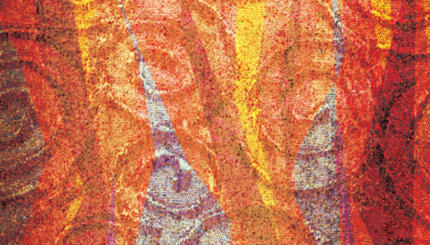Parshat Tazria deals with two subjects that at first appear quite at odds: the rituals following the birth of a child and the rituals for treating the mysterious affliction of tzara’at. In the biblical worldview, both conditions render a person tamei – as does close contact with death.
What does tamei (or the state of being in tum’ah) mean? Traditionally, this was understood to mean impure or unfit, but contemporary scholars understand it in quite different ways. This more complex range of meanings also helps us better understand tum’ah as it pertains to grief.
Rabbi Jill Hammer describes tum’ah as “a concept imposed on the feeling of eeriness, of being between worlds.” She writes: “When you encounter death, birth, fertility and illness, you are between the worlds of life and death. Something is being brought into being, or something is leaving. You are in a liminal state, a state of change that is frightening and sacred.”
Looked at this way, giving birth entails tum’ah not only because it is profoundly vulnerable, involving blood loss, infirmity and the very real possibility of death for both mother and baby. It also makes a person tamei because it is the ultimate liminal state. Is this one person or two? Are we dealing with the world of the living or the world of spirit? From where, truly, does this new human being emerge?
With your help, My Jewish Learning can provide endless opportunities for learning, connection and discovery.
Like mourners, new parents can find themselves in an unusual relationship to the wider community: Although they need its practical support, in their tender vulnerability they also require space and an exquisite attunement to their highly sensitized boundaries.
Discussing this concept, Rabbi Phyllis Berman writes: “Out of my experience as a mother, I remember very clearly that indeed there is a period of time right after you’ve given birth that you want and need to be separated from the community. Your community narrows down to the baby right in your arms and at your breast and there isn’t, for some period of time, another world except for that child.”
She goes on to describe tum’ah and its opposite, tahara, as two different types of holiness: “There is the holiness of such complete concentration and narrow focus — like a laser beam of light — that we can’t look out into the larger world; and there is the holiness where we are so in balance that we can see out into a much broader world, handle multiple worlds simultaneously. I began to think that tahor refers to those holy times in our lives when the focus is broad, when we can see the whole picture, and tamei is about that holy time when the focus is narrow and we can see only the immediate concern that’s right at hand for us.”
As with birth, in the biblical worldview the confrontation with death makes a person tamei. Death too is a passage between worlds, a change in status that is both frightening and sacred. And it is one that tends, for a time, to shrink our focus. The holiness of the mourner is one of “such complete concentration and narrow focus — like a laser beam of light — that one can’t look out into the larger world.”
Rather than leaning on the traditional interpretations of tamei, as mourners we might instead consider our state of tum’ah as one of laser-focused holiness, of exquisite attunement only to the matter at hand. This too is sacred.
This article initially appeared in My Jewish Learning’s Reading Torah Through Grief newsletter on April 12th, 2024. To sign up to receive this newsletter each week in your inbox, click here.
Looking for a way to say Mourner’s Kaddish in a minyan? My Jewish Learning’s daily online minyan gives mourners and others an opportunity to say Kaddish in community and learn from leading rabbis.



